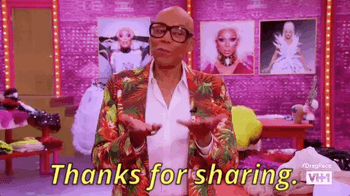The newest cohort of consumers is upon us. Generation Z, consisting of those born between 1995 to 2012-ish (everyone says something a little different), will make up 40% of all US consumers by next year. Forty percent! 😱 Commonly mistaken for Millenials (born between 1980 and 1994), members of Gen Z are different and come equipped with different practices and behaviors when it comes to technology and the internet. Also known as “Digital Natives,” these Gen Zers have only ever known the convenience of high-speed Internet, unlike Millennials who experienced some of the dark days of landlines, flip phones, hand-written notes, floppy disks, and perhaps the worst of all… movies not on demand.
Because Gen Z has grown up in the arms of digital media, reaching and engaging them enough to keep them coming back presents countless challenges. Gen Z loses interest quickly, expects the highest quality digital experience, and is accustomed to selectively filtering through what doesn’t immediately stand out.
But fear not! There are techniques and strategies that can be employed to catch and keep their attention. Investing time into understanding this complex generation is key to unlocking their engagement and earning their loyalty, which is all any publisher can ask for. And who better to get insights into the inner workings of Gen Z, than from a Gen Z herself! Here are 6 different ways you can better engage with Gen Z:
1) Communicate more frequently with visuals
A powerful way to achieve this attention-grabbing-and-keeping goal is to employ the help of visuals like GIFS, images, emojis, and videos. Before the age of 15, the average Gen Z consumer has seen around 200,000 marketing messages. At a certain point, all of these mundane, text-heavy messages start to blend together; visually stimulating content will help you stand out. Gen Z also tends to communicate with visuals, so including media in your articles, blogs, emails, promotional offers, etc. will make them feel more engaged and connected to your content.
GIFs get their own special shout out because of their current popularity and success. While prevalent amongst today’s (and probably tomorrow’s) teens, GIFs are relatable, fun, and are likely to resonate with older audiences as well as younger ones. The library of GIFs available is endless, allowing more opportunity to make your content unique and creative. Finally, GIFs are short, typically lasting a few seconds at most, which is perfect for Gen Z’s 8 second attention span (compared with 12 seconds for Millenials).
-2.gif?width=376&name=tenor%20(1)-2.gif)
2) Provide the opportunity for user generated content
Generation Z wants to be a part of the action, rather than being passive consumers of information. Most of their life has been a series of liking, commenting, and posting; they’re adapted to engage, provide input, and create content. Give them the opportunity to do these things, and they will!
This can be as simple as opinion polls or hashtags, or even more involved like photo competitions or Snapchat filters. One extremely successful example of this is Taco Bell’s 2016 Cinco de Mayo snapchat filter in which Snapchatters’ heads were transformed into tacos with faces. This campaign allowed users to take pictures of themselves in an interactive way, and awarded Taco Bell with 224 million views in one day, making Snapchat history. Another new and largely untapped opportunity for user generated content and engagement is Instagram stories, which provide options to add polls, quizzes, questions, and more for viewers to participate in.

3) Put effort into headlines
Gen Z is used to being inundated with information online and as a result, they have a natural tendency to quickly pick out what they deem worthwhile and interesting from the rest of what’s available. One of the first (and best) ways to catch their attention is with an effective headline or title. It’s crucial these headlines are straightforward enough that they can be read and understood with ease, while still providing an insight into what the content is about and why it matters. The why is an especially important component because Gen Z is always in a rush so you need to clearly indicate why your content is worth paying attention to.
For example, BuzzFeed’s headline “24 Pictures That Will Make You Feel Better About the World” is short and sweet, but still describes exactly what the article is about and why it’s of value to you. Check this resource out for more helpful headline tips.
4) Make it easy to share content
As Digital Natives, Gen Z spends countless hours consuming digital media every day. 45% of teens say they use the internet “almost constantly”, with another 44% saying they access it “multiple times a day”. A big portion of these hours are devoted to social media platforms, and scrolling through Instagram or Snapchat is now second nature.
Given that such a substantial amount of their days are spent on social media, adding social sharing buttons to anything and everything will encourage the spread of your content to new platforms and audiences. Placing sharing buttons in a visible location at the top of the page makes it easy and quick (two things Gen Z values) to share your material onto their own pages before something else catches their eye (don’t forget that 8-second attention span⏳).

5) Pay attention to social trends
While adding social sharing buttons may seem like a no-brainer, another important (and less obvious) component to consider when trying to reach Gen Z is which social platforms you are using.
Facebook, Instagram, Twitter, Snapchat, and YouTube are all frequently used amongst this younger generation, but the popularity of these platforms is different for Gen Z compared to Millennials. Facebook and Twitter are less popular with Gen Z than the more visually-oriented platforms like Youtube, Snapchat, and Instagram; 85% of US teens use YouTube, 72% use Instagram, and 69% use Snapchat whereas only 51% use Facebook and 32% use Twitter. Especially important to note is the decline in Facebook usage with Gen Z; only 6% of U.S. teens report Facebook as their preferred social media channel, and only around 11.5 million teens in the US use Facebook compared to 58.5 million Millennials. So, if you’re looking to reach Gen Z specifically, Facebook may not be the best place to focus your efforts.
Newer platforms are also emerging like Tik Tok (video sharing) and VSCO (photo sharing), and they’re important to keep in mind when thinking about your targeted strategy. With a constantly evolving digital landscape, it’s beneficial to always look out for new trends, whether that be the rise of a new platform, or the fall of an old one.
6) Optimize for Mobile
Mobile devices are becoming the more dominant source of Internet traffic (in 2018, 58% of site visits were mobile). Now consider Gen Z, who are almost all mobile all the time. 95% of teens report having a smartphone or having access to one, and they use smartphones almost 10% more than laptops. If they’re going to engage with your content, it’s more likely to happen on their phones.
So, what does this mean for publishers? Your content needs to be optimized for mobile devices! There’s nothing more frustrating than a site that is not on par with the mobile experience (doesn’t fit the dimensions of your phone screen, doesn’t scroll or click properly, is difficult to navigate, photos don’t load, etc.).
Gen Z is complex, and reaching them requires new (and sometimes unfamiliar) techniques and initiatives. However, keeping this generation in mind while creating content and strategy will certainly be worth the extra time, and will pay off in the long run as more and more of the “Digital Natives” grow up and enter the consumer market.
What are some ways that you engage with younger audiences? We’d love to hear your tips in the comments below! 🗒
